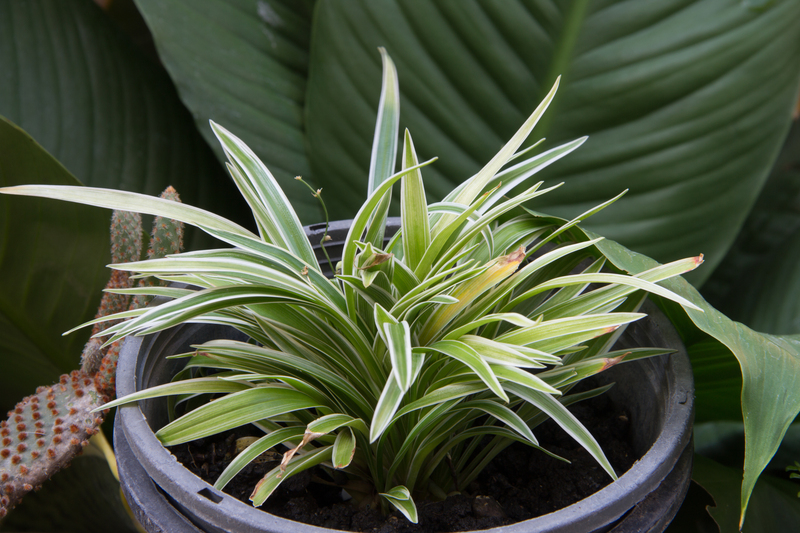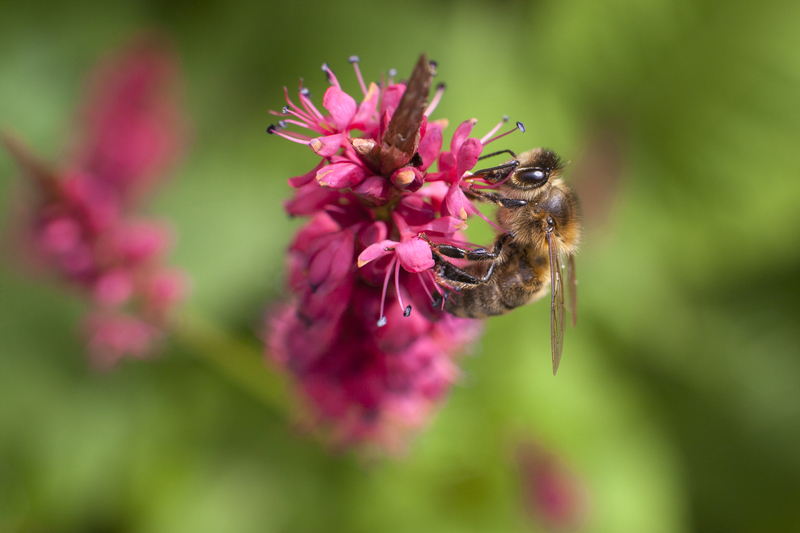The Green Overhaul: How Gardening Curtails Climate Change
Posted on 13/08/2025
The Green Overhaul: How Gardening Curtails Climate Change
Introduction: Gardening as a Catalyst for Climate Action
Climate change is often discussed in terms of rising sea levels, melting polar ice, and global carbon emissions. However, a powerful yet often overlooked tool in the climate action arsenal is right outside many of our windows: gardening. As environmental crises intensify, a green overhaul through gardening can significantly curtail the negative impacts of climate change in numerous ways. This comprehensive article explores how gardening helps fight climate change, the scientific principles behind its effectiveness, and practical steps individuals and communities can take to be eco-warriors--one plant at a time.

Understanding the Link: Gardening and Climate Change
Before diving into the ways gardening mitigates climate change, it's vital to understand the core principle connecting the two: carbon sequestration. When plants grow, they absorb carbon dioxide (CO2) from the atmosphere through photosynthesis, converting it into oxygen and storing the carbon in their tissues and the soil. This process, known as carbon capture, offsets greenhouse gases--the primary drivers of global warming.
Unlike large-scale agriculture, which often relies heavily on chemical fertilizers, monocultures, and fossil fuels, home, community, and regenerative gardens typically enhance soil health, biodiversity, and resiliency. The implications are significant: every act of gardening, from planting a tree to composting kitchen scraps, can be a form of climate stewardship.
The Multifaceted Benefits of Eco-Friendly Gardening
1. Carbon Sequestration: Turning Gardens into Carbon Sinks
- Trees and shrubs store large amounts of carbon both above and below ground.
- Perennial plants (like berry bushes and native grasses) accumulate carbon year after year.
- Healthy soils, enriched with compost and organic matter, trap additional CO2.
- Cover cropping and mulching prevent soil erosion and boost carbon storage further.
Even a small plot can have a meaningful impact on atmospheric carbon levels, especially when multiplied by millions of home gardens worldwide.
2. Urban Cooling: Fighting the Heat Island Effect
- Plants provide natural shade and release water vapor through transpiration, cooling urban environments.
- Green roofs and vertical gardens moderate temperatures in dense cities, reducing the need for air conditioning.
- Replacing pavement with living landscapes lessens the heat retained in concrete "heat islands."
By integrating more greenery into our urban spaces, we can lower energy use and reduce fossil fuel emissions associated with climate control.
3. Biodiversity: Restoring Ecological Balance
- Native gardens support local pollinators, birds, and beneficial insects, maintaining ecosystem resilience.
- Plant diversity helps fight invasive species and fortifies plant communities against drought, pests, and disease.
- Biodiverse plantings can act as ecological corridors for wildlife in otherwise fragmented landscapes.
By cultivating a tapestry of flora, gardeners tangibly enhance ecological health while advancing climate mitigation goals.
4. Water Conservation: Efficient Use of Resources
- Xeriscaping and rain gardens reduce water consumption and capture stormwater, reducing runoff and recharging groundwater.
- Mulching and smart irrigation systems retain soil moisture and minimize waste.
- Composting improves the water-holding capacity of soil, making gardens more resilient to drought.
Conserving water through climate-friendly gardening not only safeguards this precious resource but also lessens a garden's overall carbon footprint.
5. Waste Reduction: Closing the Loop
- Home composting diverts food scraps from landfills, where they would otherwise generate methane--a greenhouse gas over 25 times more powerful than CO2.
- Utilizing garden clippings and leaves as mulch or compost reduces the need for outside inputs.
- Gardening fosters a circular mindset: what is waste in one process becomes a resource in another.
By reducing waste at home, gardeners support a more sustainable, low-emission local ecosystem.
Gardening Techniques That Tackle Climate Change
1. Regenerative Gardening
Regenerative gardening is an approach that goes beyond sustainability, actively restoring and revitalizing the soil and ecosystem. It prioritizes techniques such as:
- No-dig gardening to preserve soil structure and microbial life
- Continuous cover cropping and green manures
- Adding biochar and compost to sequester carbon
- Agroforestry and food forests that mimic natural systems
Regenerative gardens not only remove carbon from the atmosphere but also build long-term landscape health and productivity.
2. Native and Pollinator Gardens
- Planting species adapted to local climates reduces the need for irrigation and fertilizers.
- Native plants support bees, butterflies, and other critical pollinators, amplifying natural resilience.
- These gardens create mini-habitats that nurture biodiversity, enabling local flora and fauna to thrive.
Through thoughtful choice of plants, gardeners foster ecosystems that are better adapted to a warming world.
3. Edible Gardens and Urban Agriculture
- Growing food locally reduces the carbon footprint associated with transportation, packaging, and storage.
- Community gardens and urban farms boost food security and introduce sustainable growing practices into city life.
- Perennial vegetables and fruit trees store carbon for years, lessening the impact compared to annual crops.
Shifting part of one's diet to garden-grown produce can meaningfully reduce household greenhouse gas emissions.
4. Peat-Free and Organic Practices
- Peat extraction destroys vital peatlands, which are among the world's most effective natural carbon stores.
- Using peat-free compost protects these environments, while organic fertilizers and amendments keep soil and water systems clean.
- Avoiding synthetic pesticides and herbicides preserves pollinator populations and soil health.
Choosing sustainable materials in the garden closes the loop for environmentally responsible growing.
Community and Policy: Scaling the Green Revolution
1. The Power of Collective Action
Individual gardens matter, but the impact multiplies exponentially when communities embrace gardening for climate action:
- Neighborhood planting initiatives transform underutilized spaces into green oases.
- Urban agriculture and community gardens reduce food deserts and promote healthy, low-carbon diets.
- Collaboration drives sharing of knowledge, seeds, and resources, creating a resilient community response to climate change.
Engagement with local authorities and participation in green advocacy can further entrench the gardening movement in public policy.
2. Policy Support for Climate-Smart Gardening
- Incentives for urban greening--from tax breaks to grants--help encourage rooftop gardens, public parks, and tree planting.
- Educational campaigns equip citizens with the know-how to start low-impact gardens.
- Bans or levies on chemical inputs and peat-based products can shift consumer behavior and support environmental restoration.
Strong policy frameworks can catalyze the shift toward a climate-positive gardening ethos.
Practical Steps: How You Can Start a Climate-Friendly Garden
- Assess your space: Even balconies or windowsills can host containers with climate-smart plants.
- Compost organic waste: Turn kitchen scraps and yard clippings into nutrient-rich compost, minimizing landfill methane.
- Opt for native and drought-resistant plants: Reduce water and maintenance needs while supporting local wildlife.
- Plant trees or shrubs where possible: Trees capture large amounts of carbon over their lifespans.
- Avoid synthetic chemicals and peat: Choose organic amendments and peat-free compost to protect soils and biodiversity.
- Conserve water: Install rain barrels or use drip irrigation for efficiency.
- Join or support community gardens: Pool resources and spread climate action throughout your neighborhood.
Every climate-friendly gardening action--no matter how modest--can lead to a greener, cooler, and more resilient world.

Frequently Asked Questions: Gardening and Climate Change
Q: Is gardening really significant for combating climate change?
A: Absolutely! While a single garden's impact may seem small, collectively, home and community gardens act as vast, decentralized carbon sinks, boost local biodiversity, reduce waste, and inspire climate-positive behavior change.
Q: What plants are best for maximizing carbon uptake?
A: Trees (especially fast-growing or long-lived species) store substantial carbon. Deep-rooted perennials, shrubs, and native grasses are also excellent choices for carbon sequestration and soil health.
Q: How does composting in the garden help the climate?
A: Composting diverts organic waste from landfills, where it would generate methane, a potent greenhouse gas. Additionally, finished compost improves soil health and increases its carbon storage capacity.
The Green Overhaul: Growing Hope, One Garden at a Time
In the fight to curtail climate change, every garden matters. Whether you're cultivating a single tomato plant on a windowsill or transforming city lots into thriving ecosystems, you are part of a global green overhaul. By leveraging the power of gardening, individuals and communities can sequester carbon, foster biodiversity, conserve water, and build more resilient food systems.
As the climate crisis accelerates, gardening for the environment offers a tangible, hopeful, and empowering way forward. From adopting regenerative techniques to advocating for supportive public policy, the seeds we plant today can yield a healthier planet for generations to come.
Start your climate-friendly gardening journey now, and become part of the solution!

